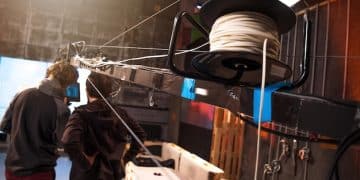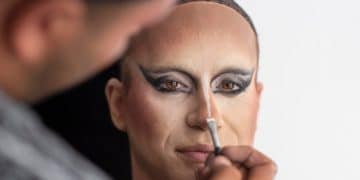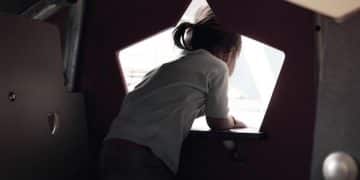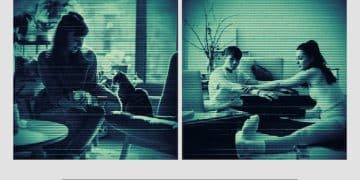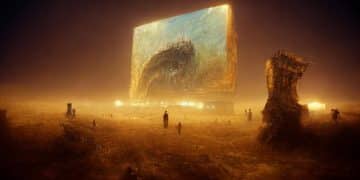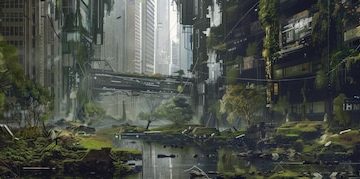Practical Effects vs CGI: Why Filmmakers Still Choose Real
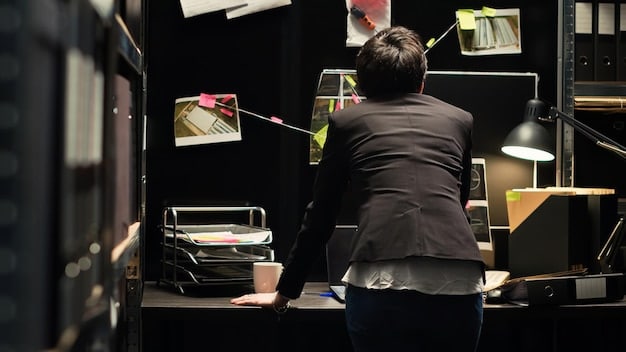
Explore why some filmmakers still champion the lost art of practical effects over CGI, valuing the tangible realism and unique challenges they bring to the filmmaking process.
In an era dominated by computer-generated imagery (CGI), the allure of practical effects endures, captivating filmmakers who seek to ground their stories in a palpable reality. This article explores **the lost art of practical effects: why some filmmakers still prefer real over CGI**, delving into the artistry, challenges, and enduring magic they bring back to the silver screen.
The Enduring Appeal of Practical Effects
Practical effects, the techniques used to create on-screen illusions through physical means, have a history as rich and storied as cinema itself. From the early days of filmmaking to the present, practical effects have been the backbone of countless unforgettable movie moments. But why do some filmmakers continue to champion these techniques in the face of ever-advancing CGI technology?
One of the main draws of practical effects is the sense of realism they bring to a scene. When actors can interact with a physical object or environment, their performances become more authentic. This tangibility translates to a more believable and immersive experience for the audience.
The Tangible Reality of Practical Effects
Practical effects offer a grounded, visceral experience that CGI often struggles to replicate. The presence of real props, sets, and makeup allows actors to fully immerse themselves in their roles, leading to more compelling performances. For audiences, this translates to a more believable and engaging cinematic experience.
The Art of Craftsmanship
Creating practical effects requires a unique blend of artistry, engineering, and problem-solving. Skilled special effects artists often spend years honing their craft. Their work is a testament to human skill and creativity, pushing the boundaries of what’s possible with physical materials and ingenuity.
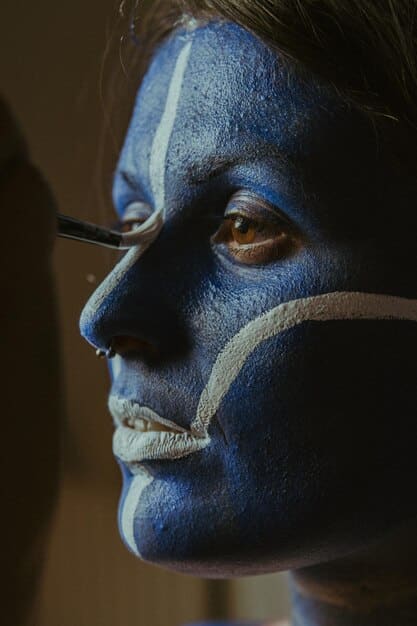
- Tactile Interaction: Actors can physically interact with props and sets, enhancing their performance.
- Authenticity: Practical effects provide a raw, unfiltered aesthetic that CGI sometimes lacks.
- Unpredictability: The inherent nature of physical effects can often lead to unexpected, yet captivating results.
Ultimately, the enduring appeal of practical effects lies in their ability to connect with audiences on a primal level. The sight of a real explosion, the feel of a tangible prop, and the artistry of a skilled makeup artist all contribute to a visceral and unforgettable cinematic experience.
CGI vs. Practical Effects: Weighing the Pros and Cons
The debate between CGI and practical effects is as old as the technologies themselves, with both offering distinct advantages and disadvantages. Understanding these differences is crucial for filmmakers looking to create the most impactful and convincing visuals.
CGI provides unparalleled flexibility and control. Digital artists can create entire worlds and characters from scratch, manipulating every detail to their exact specifications. This level of control is especially useful for scenes that would be impossible or prohibitively expensive to achieve with practical methods.
The Advantages of CGI
CGI offers a wide range of benefits, including cost-effectiveness for certain types of effects, the ability to create impossible scenarios, and the ease of making post-production changes. This makes it an attractive option for many filmmakers, particularly those working with limited budgets.
The Limitations of CGI
Despite its advantages, CGI also has limitations. Over-reliance on CGI can lead to a sterile, artificial look, especially if not executed with meticulous attention to detail. Furthermore, CGI-heavy films can often feel less grounded and tactile than those that utilize practical effects.
- Flexibility: CGI allows for unlimited creativity and manipulation.
- Cost-Effectiveness: Can be cheaper for large-scale effects and complex scenes.
- Post-Production Adjustments: Easy to modify and refine effects in post-production.
Ultimately, the choice between CGI and practical effects depends on the specific needs and goals of a project. Some filmmakers prefer the control and flexibility of CGI, while others value the tangible realism and artistry of practical effects. Often, the best approach is to combine both techniques, leveraging the strengths of each to create a truly immersive cinematic experience.
Iconic Examples of Practical Effects in Film History
Throughout film history, numerous movies have showcased the power and ingenuity of practical effects. These iconic examples serve as a testament to the artistry and skill of special effects artists, and continue to inspire filmmakers today.
From the groundbreaking creature effects in “The Thing” to the miniature sets and stop-motion animation in “King Kong,” practical effects have been instrumental in creating some of the most memorable moments in cinema. These films demonstrate the enduring power of physical effects to captivate and terrify audiences.
“The Thing” (1982)
John Carpenter’s “The Thing” is a masterclass in practical horror effects. With revolting creature transformations created by Rob Bottin, the film showed levels of artistry rarely seen before or since. The movie stands as a testament to physical effects’ ability to create genuine revulsion, and is still revered for its unparalleled effects.
- “2001: A Space Odyssey” (1968): Used groundbreaking miniatures and practical set designs to create the illusion of space travel and futuristic environments.
- “Jaws” (1975): Employed a mechanical shark that, despite its technical issues, became an iconic and terrifying movie monster.
- “Raiders of the Lost Ark” (1981): Featured impressive stunts, pyrotechnics, and practical props that brought the film’s adventure sequences to life.
These examples demonstrate the power of practical effects to create lasting impressions on audiences. The artistry and skill of special effects artists have played a crucial role in shaping the history of cinema, and their work continues to inspire filmmakers seeking to create visually stunning and emotionally resonant experiences.
The Revival of Practical Effects in Modern Filmmaking
Despite the dominance of CGI in modern filmmaking, there has been a resurgence of interest in practical effects in recent years. Many filmmakers and audiences have grown weary of over-reliance on CGI, and are seeking a more tangible and authentic cinematic experience.
Films like “Mad Max: Fury Road” and “Dunkirk” have demonstrated the impact of practical effects in creating immersive and visually stunning worlds. These movies show that practical effects can be used to enhance CGI, creating a more believable and engaging experience for the audience.
Benefits of Combining CGI and Practical Effects
Rather than viewing CGI and practical effects as mutually exclusive, many filmmakers are now embracing a hybrid approach. By combining the strengths of both techniques, they can create visuals that are both stunning and believable. This approach requires careful planning and coordination, but the results can be truly spectacular.
The Role of Miniature Effects in Modern Cinema
Miniature effects, an old-school technique involving creating miniaturized versions of real-world objects to simulate something in a real shot, is having a moment now. The results look realistic since these are real objects caught through the lens of a camera. It’s one of the many examples of ways practical effects are coming back in vogue.
Several directors and producers have also commented that practical effects typically allow production to move faster and provide something to look at on set for the performers, rather than imagining something that would be added later by CGI.
Enhanced Realism: Practical effects ground CGI elements in the real world, making them more believable.Improved Performance: Actors can interact with tangible props and sets, leading to more authentic performances.Cost-Effectiveness: Combining practical effects with CGI can often be more cost-effective.
Practical effects are here to stay, and filmmakers are continuing to implement them in unique ways within the broader digital toolset that has dominated the sector for years. These new ways of thinking continue to bring tangible and visually breathtaking cinematic experiences.
The Challenges and Rewards of Working with Practical Effects
While practical effects offer many advantages, they also come with their own set of challenges. Working with physical props, sets, and makeup can be more time-consuming and labor-intensive than relying solely on CGI. It also requires a high degree of skill and precision, as even the smallest mistake can ruin an effect.
Despite these challenges, many filmmakers find the rewards of working with practical effects to be well worth the effort. The tangible realism, the artistry, and the element of surprise all contribute to a unique and fulfilling filmmaking experience.
Safety Considerations
One of the biggest challenges of working with practical effects is ensuring the safety of the cast and crew. Explosions, fire, and other dangerous effects require careful planning and execution to prevent accidents. Special effects teams must adhere to strict safety protocols and work closely with the director and other departments to minimize risks.
The Element of Surprise
Also, working with practical effects often allows for spontaneity and creativity. The inherent nature of physical effects can lead to unexpected, yet captivating results. Filmmakers may discover a newfound way of understanding a character through effects.
- Time and Labor: Practical effects can be more time-consuming and labor-intensive than CGI.
- Safety Concerns: Working with physical effects requires careful planning and execution to ensure the safety of the cast and crew.
- Budgetary Constraints: Complex practical effects can be expensive, requiring significant investment in materials and personnel.
Despite these challenges, successful practical effects can deliver an experience that often looks more genuine and is rewarding to both the creators of that content and the audience enjoying it.
The Future of Practical Effects in the Digital Age
As technology continues to evolve, the future of practical effects remains bright. Filmmakers are finding new and innovative ways to combine practical and digital techniques, creating visuals that are both stunning and believable. The key lies in understanding the strengths and limitations of each approach, and using them in harmony.
In the coming years, we can expect to see even more remarkable examples of practical effects in film and television. From advanced animatronics to immersive set designs, special effects artists will continue to push the boundaries of what’s possible, creating cinematic experiences that are both groundbreaking and unforgettable.
The Evolution of Animatronics
Animatronics, the use of mechatronics to make puppets appear lifelike, continue to evolve, offering filmmakers even greater control and precision. New advances in robotics, materials science, and computer control enable the creations of increasingly realistic and expressive animatronic characters.
Immersive Set Designs
Another trend to watch out for is the creation and further development on set design. A real set provides an amazing feel and aesthetic to a scene that sometimes cannot be replicated using digital techniques. In addition, this can improve things for actors on set.
Practical effects had for a long time been put aside in exchange for CGI effects, but as time passes people involved in the production of entertainment are beginning to favor physical effects once again.
- Advanced Animatronics: More realistic and expressive animatronic characters.
- Hybrid Techniques: Combining CGI and practical effects for seamless visuals.
- Immersive Set Designs: Creating hyperrealistic sets that enhance the realism of the film.
The future of practical effects lies in the balance between these old and new approaches. By embracing both the artistry of physical effects and the power of digital technology, filmmakers can create works that are truly spectacular.
| Key Point | Brief Description |
|---|---|
| 🎬 Realism & Authenticity | Practical effects offer a tangible, authentic feel that enhances actor performances. |
| 💡 CGI Limitations | While flexible, CGI can sometimes lack the raw, unfiltered aesthetic of real effects. |
| 🛠️ Skill and Artistry | The production of quality physical effects involves very skilled artists and technicians with years of experience. |
| 🔮 Hybrid Techniques | Combining practical and digital methods is the future, merging creativity with tangible realism. |
Frequently Asked Questions
▼
Practical effects are visual effects achieved through physical means, without the use of computer-generated imagery (CGI). They involve real props, sets, makeup, and stunts, creating a tangible and authentic feel on camera.
▼
Yes, practical effects are experiencing a revival in modern filmmaking. Many directors now combine them with CGI to achieve enhanced realism and a more grounded visual experience for audiences.
▼
Practical effects offer enhanced realism, improve actor performance, and provide a raw, unfiltered aesthetic that CGI may lack. They can also be more cost-effective than CGI for certain types of effects.
▼
Certainly. Some titles that are held in high regard because of the integration of practical effects are “The Thing” (1982), “2001: A Space Odyssey” (1968), “Jaws” (1975), and “Raiders of the Lost Ark” (1981).
▼
The usage of physical effects can be more time-consuming than digital methods. These methods of production also require high levels of planning to ensure safety. A bigger investment into safety equipment would be required.
Conclusion
In conclusion, while CGI has revolutionized filmmaking, the allure of practical effects endures due to their ability to ground stories in reality. By valuing the tangible realism and artistry, filmmakers can create compelling cinematic experiences.
